Nano and microdrons. Not only for special forces
The market for unmanned aerial vehicles is still growing, numerous companies appear (and disappear) every year. Based on the maximum take-off weight and working height, the US Department of Defense divided all such systems into five groups. Group 1 systems weigh up to 9 kg, groups 2 - up to 25 kg, groups 3 - up to 600 kg, groups 4 and 5 - over 600 kg. Systems from group 4 fly at altitudes up to 5500 meters, while the working heights of systems from group 5 are over 5500 meters.
All UAVs discussed in this article are in Group 1. This group, with a maximum takeoff weight of 0 to 9 kg, includes a large number of systems of various types, including aircraft and helicopter types, and all of them, as a rule, are launched by hand. Very few of these drones could be categorized as "nano". They are very light systems, mostly with a main rotor, however, like all those mentioned in this article. Any soldier dreams of having a flying system at hand that can look “around the corner” and return to perform the following tasks, because its weight and the amount of logistics are minimal, that is, a significant increase in its overall load is excluded.
Special forces, as a rule, are the first to receive new high-tech systems, which later enter the arsenal of conventional units. However, few systems are available for the military on the defense market (of course, all of these “leisure” drones, sold in hundreds of toy stores, are not considered here), of which only a part is first used by special forces and even fewer that instantly become bestsellers. Some other, slightly larger drones, no longer fit into the nano category, have rather peculiar characteristics, which makes them an excellent choice for special operations forces (MTR) and not only.
Before we start describing existing systems, let's take a look at what could be the future, although today many things can be more likely to be attributed to the realm of science fiction than to reality. In 2011, AeroVironment developed the Nano Hummingbird, a vertical-take-off and landing bird with a maximum take-off weight of 19 grams, with 160 mm wingspan, allowing it to remain in the air. Of course, this is in all respects the most difficult development, starting from mechanics and avionics and ending with the data transmission channel. At the Charles Stark Draper Laboratory, they took a different path, believing that there is no more efficient and maneuverable insect-like nanodron than a dragonfly mimic drone. In January 2017, it was announced there that its DragonflEye program, implemented in conjunction with Howard Hughes Medical Institute, has made some progress in controlling dragonflies thanks to a tiny satchel that combines navigation, synthetic biology, and neurosensory technology that sends dragonfly control neural signals. Today, the technology of poultry or insect systems is not ready for great commercial success, but the time will surely come when they will find their grateful user. In the meantime, the current nanodrons mainly use helicopter technology, providing the possibility of vertical take-off and landing.
In January 2017, the U.S. Department of Defense issued a request for information called Soldier Borne Sensor Unmanned Aircraft Systems (soldier-worn sensor, unmanned aviation complexes), the purpose of which was to collect information for a future planned program. This time, the goal was to deploy these systems in the regular army to provide surveillance at the level of individual squads and platoons. Not many systems were available on the market that met American requirements, which were announced in January 2018 at a meeting at the so-called Industry Day. Among them: hovering at low altitude for at least 15 minutes, three flights with a fully charged battery in light wind, the maximum weight of the device is 250 grams, the maximum weight of the entire complex is 1,36 kg. The requirements also provide for the probability of detecting 90% of an object the size of a person from 50 meters at night, plus a maximum training time of 16 hours. The system must store photos and videos and transmit images to the soldier in real time for immediate use. In addition, selection criteria include visual and acoustic signatures, direct range flight range, and other parameters as yet unnamed. Seven companies and organizations attended the briefing, but the main competitors quickly declined to three participants - AeroVironment, InstantEye Robotics and FLIR Systems.
At the end of November 2016, FLIR Systems acquired the Norwegian company Roh Dynamics AS for $ 134 million in cash. This company is one of the pioneers in the field of nano-UAVs, it was founded in late 2007 with the aim of developing the smallest UAVs in the world, designed for professional users. The first version, called Black Hornet (black hornet), appeared in 2012, and after the new version appeared, it was designated Black Hornet 1. “The aircraft was based on completely new technology, but its flight range was limited to 600 meters, however flight duration is 15 minutes, ”a representative of FLIR Systems said. The first customer was the British Army, which, in accordance with urgent needs, deployed its first PD-100 Black Hornet drones in 2012 in Afghanistan. This has become an important point on the track record of the Norwegian nano-UAV; later in 2015, the second version of Black Hornet 2 was developed and introduced. "It was based on the same platform, but many improvements were made regarding sensors, range and wind stability." An engine with lower power consumption was installed on the device, which, in combination with an increased capacity battery, made it possible to increase the flight range and at the same time increase the range of the data transmission channel. In addition, the Black Hornet 2T version was developed, on which a thermal imager from FLIR was installed, this was the first joint work of the two companies. The Black Hornet 2 system, due to its obvious advantages, has been acquired by a number of customers.
Considering the launch of a potentially priority program in the United States, as well as the fact that the US military buys at least an order of magnitude more drones than other countries, FLIR decided that it is worth investing more in the field of nanosystems and, therefore, acquire Рхох Dynamics. After this merger, funding for promising projects increased dramatically, resulting in a new Black Hornet 3 drone. Designed by the father of the original Black Hornet, Peter Muren, the device retained the helicopter layout, but the rotor design was radically revised. The platform has now become fully modular, a removable battery and various target loads allow you to quickly reconfigure the drone. The new generation base station has received a number of improvements, both hardware and software. The weight of the device Black Hornet 3 with a screw with a diameter of 123 mm doubled compared to its predecessors and amounted to 33 grams, it can remain in the air for 25 minutes and fly away to a maximum distance of 2 km. The drone has a speed of up to 6 m / s and can fly at a wind speed of up to 15 knots (gusts of up to 20 knots), as well as in light rain. As for the sensors, the drone is equipped with a FLIR Lepton thermal imager and a high-resolution video camera capable of taking photographs. A thermal imager with a matrix size of 160x120 and a pitch of 12 microns works in the range of 8-14 microns and has a field of view of 57 ° x42 °, its dimensions are 10,5x12,7x7,14 mm and its weight is only 0,9 grams. Two daytime cameras are available depending on the configuration, providing respectively a resolution of 680x480 video and 1600x1200 photographs, there is the possibility of overlaying images from daytime and night cameras.
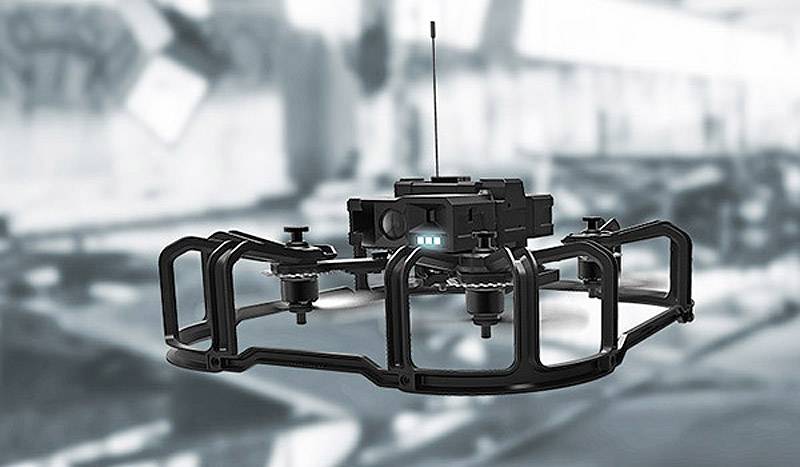
The main innovation in Black Hornet 3 is that it can fly even in the absence of a GPS signal. “However, we continue to develop this opportunity, since it still has the potential for many improvements,” said a company representative. Four flight modes are available: automatic and manual hovering and monitoring, flying along a predetermined route and points selected by the operator, automatic return and loss of communication. “We are constantly updating our software in order to reduce the cognitive load on the operator. This system, known as the Black Hornet 3 PRS (Personal Reconnaissance System) is integrated with the US Army’s ATAC (Android Tactical Assault Kit) software. The complete Black Hornet 3 system weighing less than 1,4 kg includes two aircraft, a hand controller and a video screen. The Black Hornet 3 drone was bought by 35 countries, among which the largest buyers are the United States, Australia and France. In November 2018, France announced a purchase for a total of up to $ 89 million, and a few days later the United States signed the first contract for $ 39 million. In April 2019, the United Kingdom signed a $ 1,8 million contract as part of an expedited procurement initiative. In the summer of 2019, the U.S. Army received its first Black Hornet 3 PRS systems for the 82nd Airborne Division, which was deployed in Afghanistan. These nanodrons are used to collect information and reconnaissance at the detachment and platoon level.
In developing the PRS drone, FLIR realized that many vehicles needed a short-range reconnaissance system that could be used from under armor. This led to the advent of the Vehicle Reconnaissance System (VRS), which is based on the same platform and features a launch module with four removable heating and charging cassettes. The VRS kit weighs approximately 23 kg, measures 470x420x260 mm and can optionally be equipped with ballistic protection. It can easily be integrated into the battle control system through a standard interface; Kongsberg has already integrated it into its Integrated Combat Solution (ICS). FLIR demonstrated this system not only as a reconnaissance, but also as an aiming tool with integrated GPS. Currently, VRS is only available in a pilot version, but FLIR is ready to start production due to the fact that after the first show of this product in October 2018, there was a great demand for it.
In addition to FLIR, two more applicants, AeroVironment and InstantEye Robotics (a division of Physical Sciences Inc), fought for the Soldier Borne Sensor contract. AeroVironment has developed a 140 gram Snipe quadcopter with a flight duration of 15 minutes and a flight range of more than a kilometer, equipped with optoelectronic and infrared cameras. With a maximum speed of 9,8 m / s, the device is quite silent and can not be heard at an altitude of 30 meters above the ground, it is controlled by an intuitive application loaded on a touch controller with Windows 7. Preparing the drone for flight, assembled from five moving parts takes less than a minute. After choosing one of its competitors by the US Army, AeroVironment apparently abandoned the Snipe program.
The quadcopter Mk-3 GEN5-D1 / D2 developed by InstantEye Robotics weighs less than 250 grams (maximum weight allowed). The 6,35 kg complex consists of two devices, one Ground Control Station-D, one protected display, six batteries, a charger, a set of screws, one spare antenna, a transport box and a container for working in the field. The device can reach a maximum speed of 8,94 m / s and withstand the same wind speed, the range of the data channel is 1,5 meters. The main battery provides a flight duration of 12-15 minutes, however, an additional battery guarantees 20-27 minutes of operation. At the end of 2018, InstantEye delivered 32 of these complexes to the U.S. Marine Corps for operational evaluation as part of a small tactical drones program.
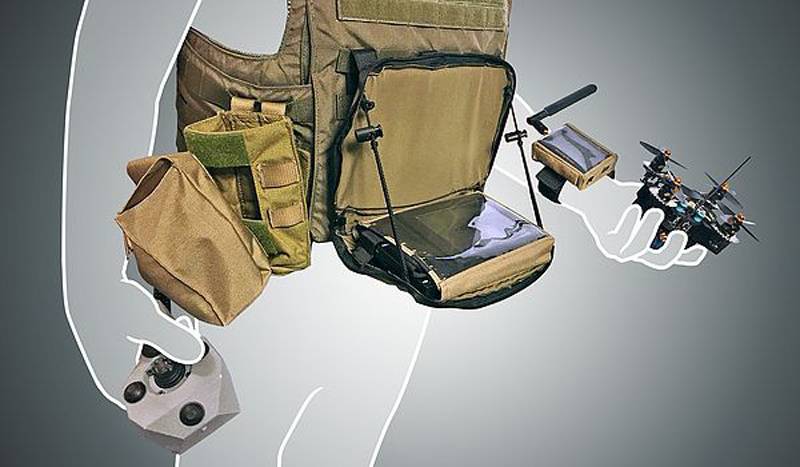
The NanoHawk drone, first shown as a prototype at Eurosatory 2018, was developed by the French company Aeraccess based on the specific needs of the French special forces, which needed UAVs for use inside buildings and other enclosed buildings. In a competition led by the Arms Control Laboratory, NanoHawk won five other candidates in the first round.
In this project, Aeraccess used the experience of its work on the larger SparrowHawk drone, developed in conjunction with the French police special forces and also able to work in the absence of a GPS signal. However, the French special forces wanted to have a significantly smaller system and, as a result, the NanoHawk drone appeared, in which the quadrocopter layout was saved and there was easy protection of the screws, which cannot be dispensed with when flying indoors. Compared with the prototype, the case of the serial version is equipped with obstacle avoidance sensors with a coverage area of 360 °. In addition, two optoelectronic / infrared target loads are installed in front and behind, which allows the operator to see the picture from both directions and, therefore, it is better to own the situation; optional sensors also enable 350D digital mapping of buildings. The housing along with the protective construction of the screws has been completely redesigned, now the user can quickly repair the device in the field. The current version weighs 600 grams without battery, while the maximum take-off weight is increased to 10 grams with a more powerful battery that provides 180 minutes of flight. The dimensions remained the same, 180x240 mm in screws, however, if the customer requires a new protective cage, then the dimensions will increase to 240x90xXNUMX mm.
One of the main elements of the complex is a manual controller, which allows the operator to hold in the other hand weapon, while the monitor is installed on body armor, although it is possible to install it on the back of the shield or put on the wrist. Intelligent flight modes significantly reduce the operator’s workload, and the encrypted data transmission channel with multiplexing based on orthogonal frequency division provides simultaneous flight control and video transmission through the use of one cryptographic system with two different frequencies.
Since its first show, the NanoHawk drone has undergone extensive testing. Performing a typical task, it takes off from the outside of the building, flies into it through an open window and then moves 3-4 floors down or up, depending on the thickness of the walls. The device also received permission to work on ships, demonstrating its ability to fly above and below the operator without losing the radio and video signal, which opens up a whole new market. At night, it can be connected to a night vision system so that only the operator can see it. NanoHawk also passed tests in conjunction with dog training, during which dogs were trained to carry a drone, holding it in its mouth with a short leash. The dog begins to check the building and, when it senses the presence of a person in the room, throws the drone outside, after which it takes off on command. The dog can also be equipped with a repeater in order to increase the range of the drone, which, according to the developer, is several hundred meters outdoors.
Each NanoHawk system consists of a data channel, a controller, a monitor and two devices. The first units to order NanoHawk were local special operations forces. French special forces signed contracts with Aeraccess, according to which he received specialized versions of the system. Regarding exports, Aeraccess has received orders for an unknown number of devices from the military and law enforcement agencies of Singapore, the United Arab Emirates, the United Kingdom and Canada.
The French army purchased, at an urgent request, NX70 microdrones developed by Novadem. This quadrocopter with a maximum take-off weight of 1 kg in the unfolded state has dimensions 130x510x510 mm (130x270x190 mm when folded). It is equipped with an Ultra-HD daylight camera with two focal lengths providing 50 ° and 5 ° fields of view, and a thermal imager with a 34 ° field of view; depending on the customer’s desire, the video converter matrix can have the dimensions 320x240 or 640x480. The flight preparation time takes less than a minute, the time spent in the air is 45 minutes, and the flight range is one kilometer; The longer range option has a range of up to 5 km. The device can fly at wind speeds up to 65 km / h and at an altitude of 3000 meters above sea level. The NX70 drone can also fly in a tethered configuration, which allows you to stay in the air for a long time. The French army received the first 27 systems (each with two units) in June 2019. The first NX70 drones were deployed in the African state of Mali, where the French contingent is fighting rebels.
In 2017, Diodon Drone Technology introduced its quadcopter SP20. Definitely not in the nano-UAV category because of its unusual design, it is well suited for use by special forces. This quadrocopter is designed to work in the landing units, as it has a hardened and waterproof in accordance with the IP46 standard body with all electronics and four inflatable "legs", at the ends of which screws with engines are installed, which allows the device to stay afloat, using the surface of the water for take-off and landing. It can work on land, while inflatable elements absorb shock energy well. The Sp20 drone weighing 1,6 kg has a nominal lifting capacity of 200 grams, has a top speed of 60 km / h and a vertical speed of 3 m / s. Two sensors are offered for it: a CCD camera with a 976x582 matrix and with 3 mm, 8 mm or 12 mm lenses, capable of working under 0,0002 lux lighting, and an uncooled thermal imager with a 14,2 mm lens and a 640x480 matrix.
The SP20 drone can fly at wind speeds of up to 25 knots, the maximum working height is 2500 meters, and operating temperatures from -5 ° C to + 45 ° C. With deflated “paws” and folded blades, the dimensions of the apparatus are 220x280x100 mm, in working condition - 550x450x190. The preparation time for work is less than a minute, which is greatly facilitated by the included small compressor used to inflate the “paws”. The battery lasts for 23 minutes. The SP20 model is equipped with an analog communication channel with a range of up to 2 km. Diodon's SP20 drone comes with a 56 kg IP1,2 protected ground control station. This unique amphibious UAV is currently being tested in various divisions, and Diodon Drone Technologies expects a first order for it, and above all from the French military.
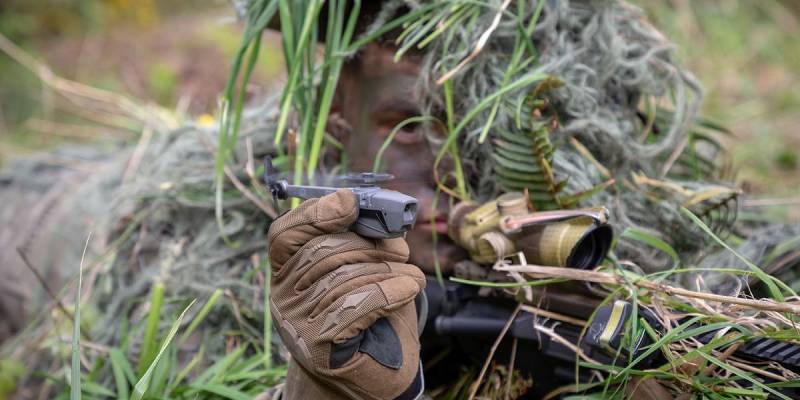
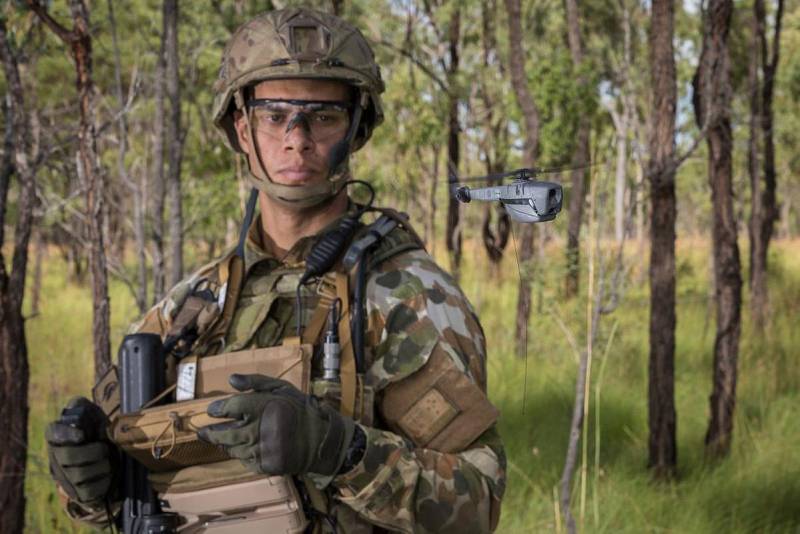
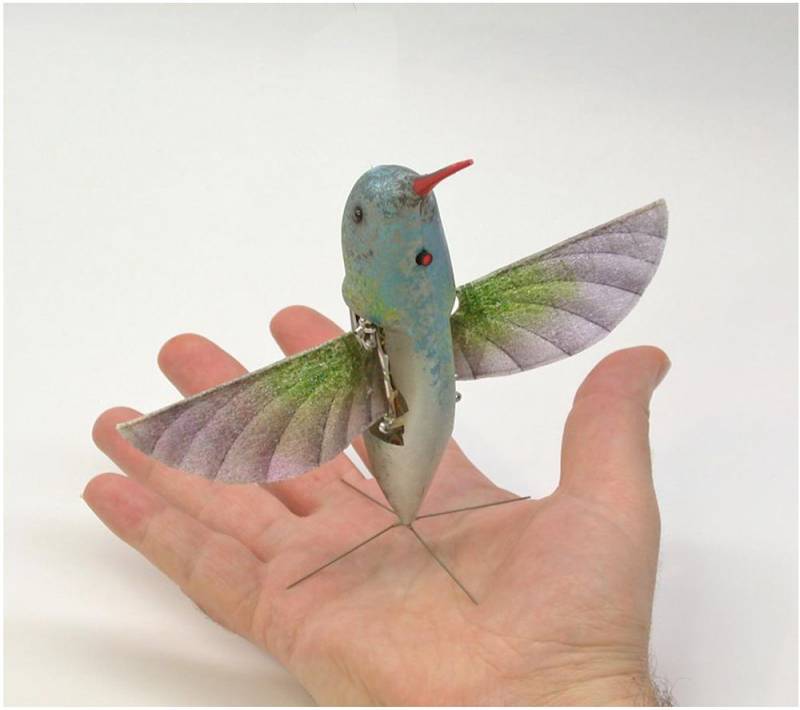
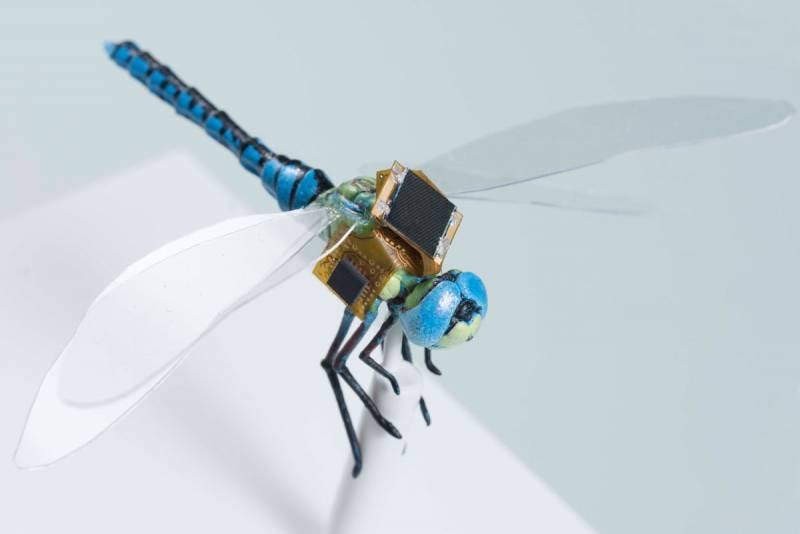
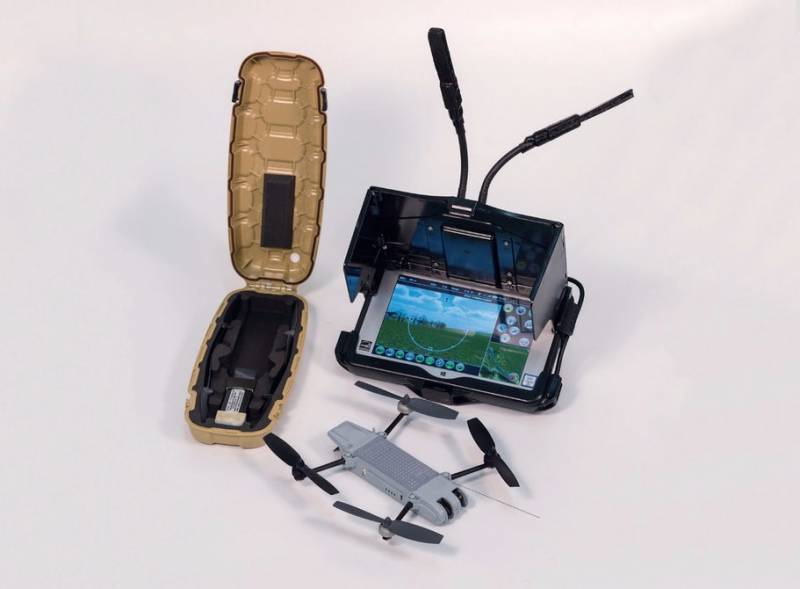
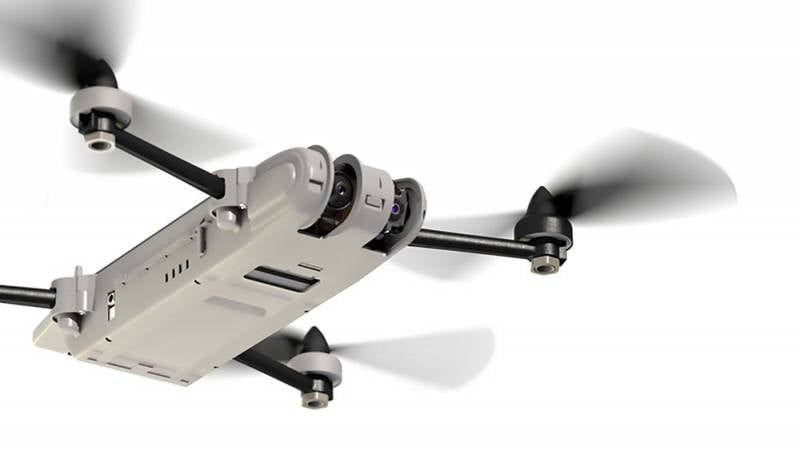
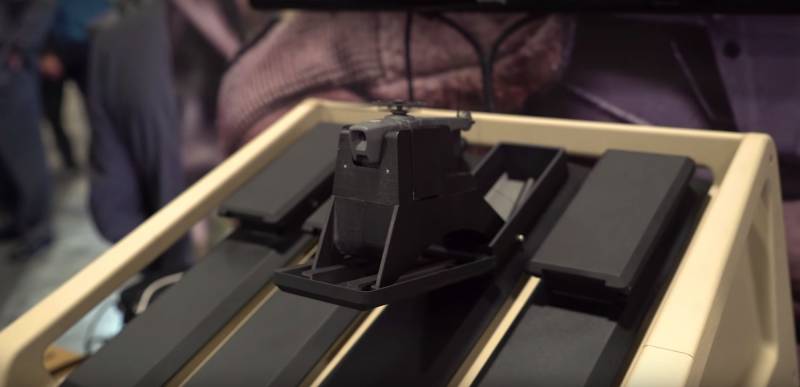
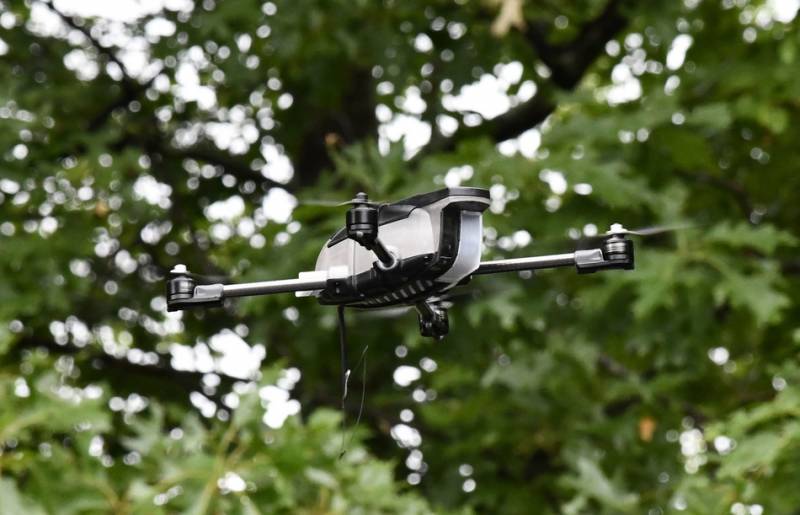
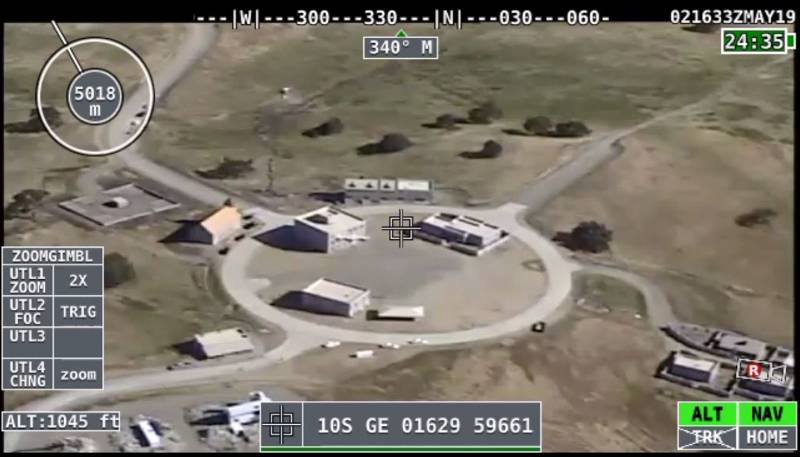
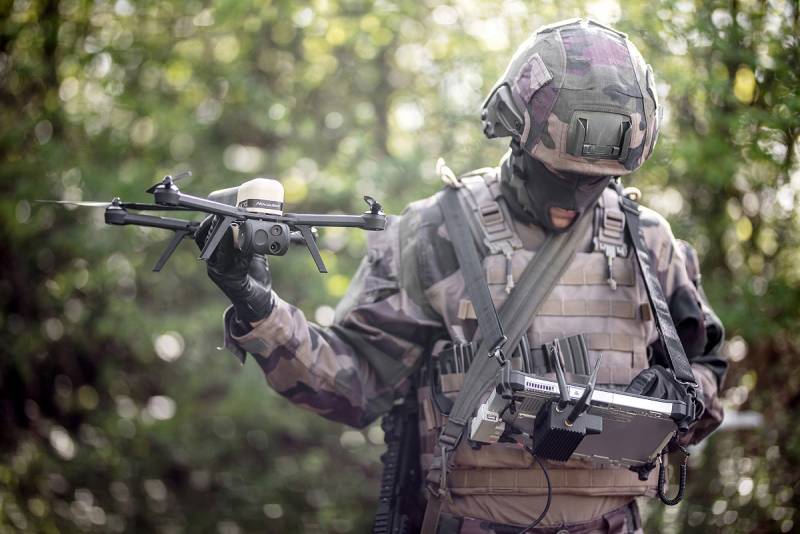
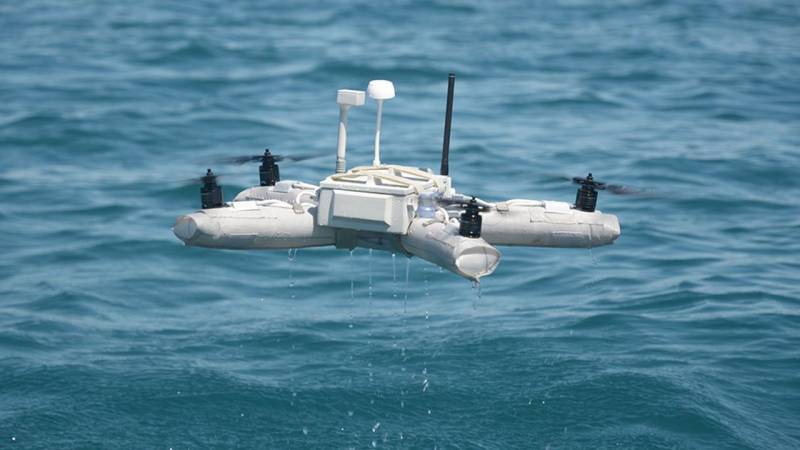
Information